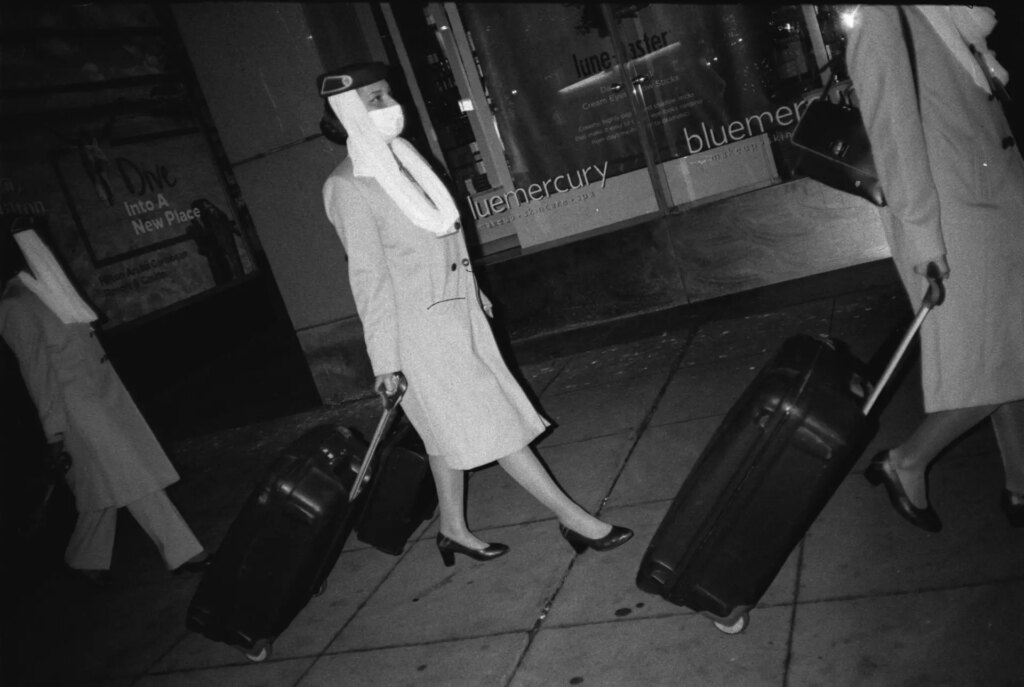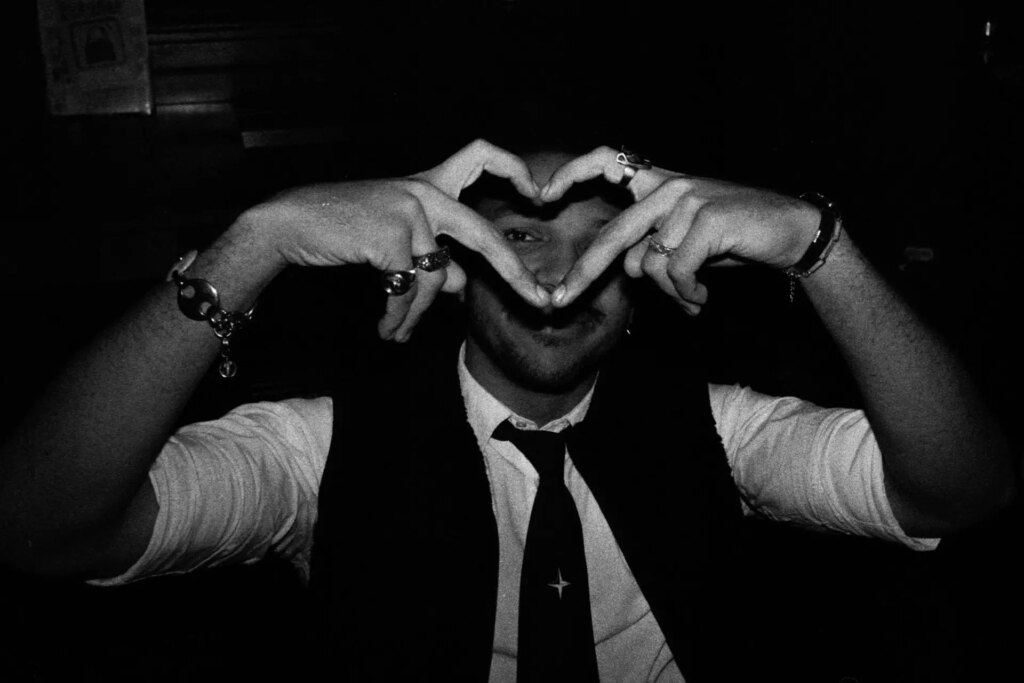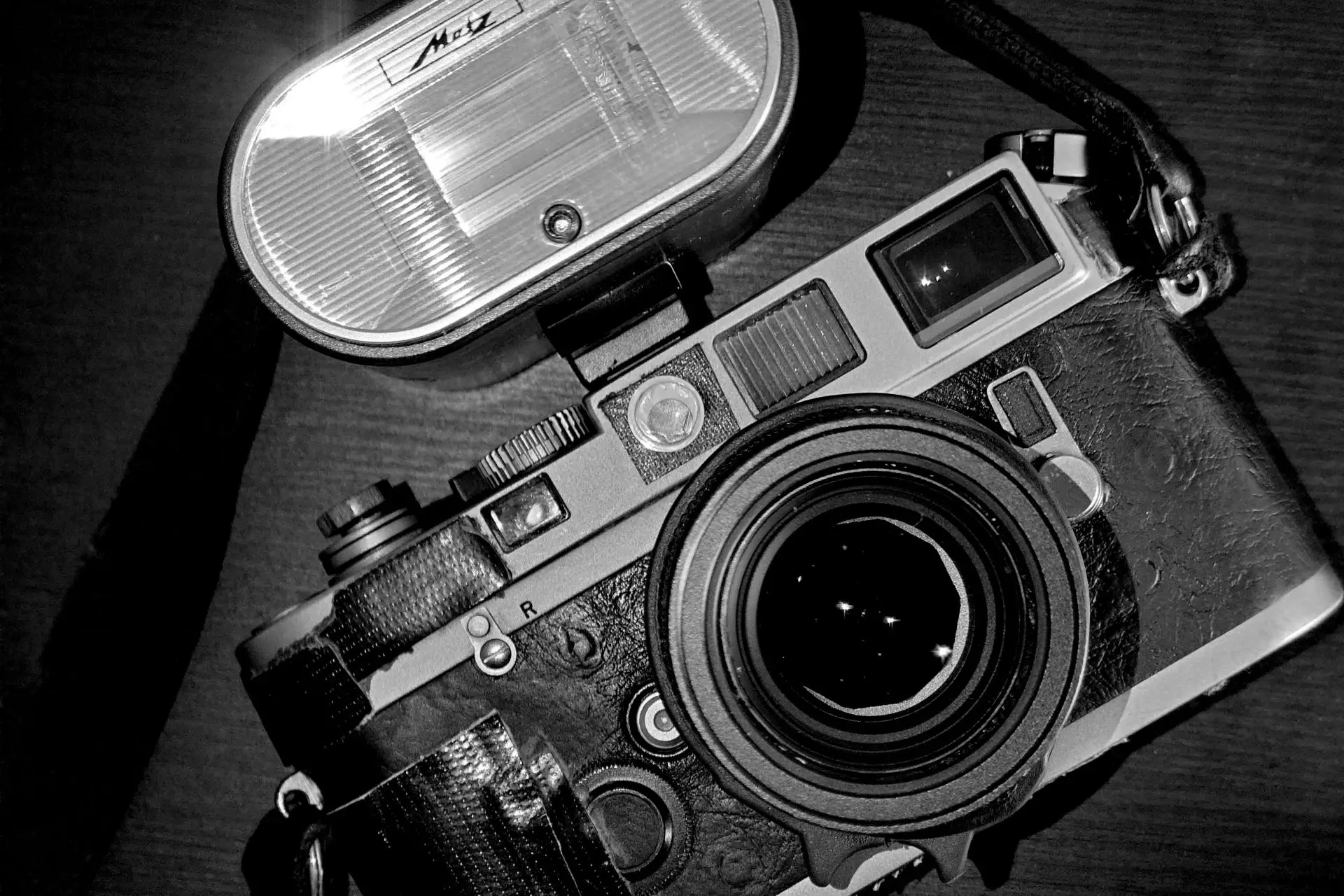I do not like flash photography. I do not enjoy the feeling of light cutting through the darkness directly towards whomever or whatever I am photographing.
However, sometimes there is simply no light available. Sometimes making the image is more important than my sensibilities and taste for ideal conditions. Sometimes photography is not about what I enjoy, but what is necessary in order to continue enjoying it. Most everyone knows what a camera is, and the only thing you’re likely to achieve from photographing “stealthily” is presenting as an outsider, which isn’t going to give you the results you’re probably after. Similarly, people know what a flash is and does, and if you’re using one while also trying to remain stealthy you’re entering quite the paradox – but using one while also being overt is just combining two obvious things about photography that people are familiar with without wondering what you might be trying to achieve.
I have recently been working on expanding my Overton window in regard to using flash. It is the largest gap in my photographic knowledge by a long way, and I have found several instances where not using a flash has been more of a drawback than any kind of “statement” (not that it was ever something I really felt particularly strongly about).
Some of my biggest influences in photography have viewed flash or introduced studio/staged effects as cardinal sins. However, this is not a consensus position – flash works for some and not others, in some situations and not others. Some photographers are known for their distinctive use of flash, like the unparalleled Craig Bernard who works in such a unique way, which really comes across in the work. I will never be this kind of flash photographer, my use case is not as nuanced – a necessity rather than a finesse.
To Winogrand, flash often was available light, as he considered the flash available to him. Photography is fundamentally not eyesight; we can already derive more from a long exposure in the darkness than we can see naturally, a flash just speeds up the process a bit, and makes it portable for subjects moving faster than a still life.
I used the built in flash on my digital camera when starting out, but quickly became averse to it. I didn’t pick it up again until 2021 when I field tested the Kodak Tri-X single use camera. Flash is a fundamental part of the disposable camera experience, so I felt compelled to incorporate it into at least a few of my images. The situation for disposable flash use is very simple, as every setting is fixed – ISO is pre-loaded, aperture is fixed, focus is fixed and limited, shutter speed is fixed. Setting the flash to fire means you only need to consider the distance – something you are already limited by due to the fixed focus and aperture.

Although the results are nothing special I felt confident enough in this simplistic process to want to try exactly the same setup outside of a disposable, ie to fix all of my settings in advance and photograph as if my camera were a point-and-shoot. However, researching this direction led me into the language of “Guide Numbers”. Numbers are maths, and maths is fundamentally cursed. I would not like to incorporate maths into my photography outside of doubling and halving for stop of light calculations – and even that leads to some bad days.
I decided instead to go for a more familiar, half step up from a point and shoot, my Olympus XA. The flash system for this is straightforward, although with more going on than the flash on the disposable camera. I was able to understand what the numbers meant, and what result I could expect when using it at the working distance, which empowered me to return to that earlier attempt to achieve the same on my “real” camera.

I then tried to align the settings on my Meike MK300 and Leica M6 so that they would be the same as I had been using with the XA.
I believe this may be where the issue occurred, as while I set up the exposure settings correctly I did not factor in the very limited working range of the XA flash – I got ahead of myself and did not do calculations on distance as I do when I can clearly see the indicated range on the back of the XA unit. I made this mistake while photographing a celebration of Bandi Chhor Divas and Diwali in Southall, and was very disappointed to see those frames.

After this I returned to the familiarity of the XA when I needed to use flash, but started to try and figure out a basic framework for guide numbers so that I could better understand why even slight adjustments to the exposure on the camera had such drastic effects on what it was catching from the flash light.
This still made/makes little sense – I just want something that does it for me at this point. Working in the dark I was struggling with even seeing what I was setting my aperture/shutter to, and setting the distance to match what felt like some arbitrary range from the flash. It was too much at once while also needing to concentrate on actually making the images I need to make, I need whatever flash I end up using to bend to my will, and not the other way around – especially when the potential for failure and wastage in situations where I need to guarantee a result. I need something with an easy to interpret distance scale, and an automatic function for situations where I need to act and react without thinking.
This led me to the idea of an “auto thyristor” which sounds like something medically undesirable, but is actually a way of referring to a flash with a built in system for automatic adjustment within certain parameters. There are all kinds of flashes with this capability, at all kinds of price point, but the one I eventually decided on is the elegantly named Metz 20 BC 6. This is well reviewed for reliability, but what was most desirable to me was the usability. The interface on the back is far more comprehensive to my eye and brain than any of the ones with spreadsheets stuck to them. Maybe you find those easier to read, but for me, this felt like the one. To make it even simpler I inked out the feet, as I do on my lenses, as I can only understand metric.
It is very basic, and very simple to use. It fires at one power consistently, and the auto thyristor works as a “cut off” if switched to that mode, which calculates exposure at portrait distances and shuts itself off when a correct exposure has been measured. This means I can work on scenes with the manual range, but switch to auto when working up close and not looking to do any calculations other than working with my subject.

This flash is powerful enough to work within my ideal documentary 35mm range which extends as a sort of bubble around me to maybe 5-10m in which I piece together layered frames. An ISO of 1600 will give me a range up to 40m at f/2, but I haven’t yet taken advantage of this – instead I usually have it set at ISO 400, which means 10m at f/4, and portrait distance on auto at f/11 for anything up to 3.6m. For portraits I warn that the flash will go off, and ask if theres a sensitivity like epilepsy to be aware of (or joke that if they didn’t know we might be about to find out!). In pitch dark the flash will have great potential to disorient and reset any low-light vision they’d manifested from their eyes adjusting.

There is no digital screen, no synchronisation/communication needed between the flash and body aside from the central pin which instructs it to fire at a certain time. My exposures from this have been consistent and usable from many situations so far. A situation I still need to compensate for is when working in total darkness, where I still underestimate how close I am to my furthest subject, leading to a reasonably lit foreground, but background fading into nothingness before the light is able to reach what I’d like the backdrop to be.

I think this is the level that works for me, the gear that offers to me, and the most consistency I’ve been able to manage with flash to date. I am comfortable settling into this workflow, without further need to expand my knowledge, skill, or equipment unless I hit a wall sometime in the future.

Honestly, reaching this point was a struggle, even though it’s not too different to the trial and error it took me to reaching my ideal gear kit in other areas. If not for my mental health I would still rather not use flash, and apply it as little as possible, but as much as is necessary. At the time of writing this winter is dark, the sun setting around 4pm giving me so few hours of daylight to work with. I’m struggling with creative free fall after completing some recent projects, and the last few articles on my personal blog are mostly thinly veiled depressive rambles.
I have photographs to make and limited light with which to make them. Light is rarely at the front of my mind when working, I’ll usually expose for the subject and work my composition around that, unless my photographs are “about” the light. None of my flash photographs are “about” the flash (although one of my breakout photographs is “about” someone else’s flash, although not an image I want to define me at all, a fluke parlour trick of a shot, not a rich text like I want to be producing). They aren’t about darkness and gloom either. They’re about people and ideas, stories I am telling, concepts I am developing. I can still have a photograph about darkness, but with a flash I can also cut through that darkness, stealing from it a small slice of light.
As I mentioned at the start, I don’t feel that with my unsubtle style of shooting flash is a disruption to any of the situations I’ve applied it to so far. It will depend on the photographer; if you “belong” in that space (more a mental hurdle for many), and your behaviour photographing is being accepted then introducing a flash variation isn’t going to do a lot. For a candid moment people only react to the flash after it’s gone off, not during as it lasts only for a fraction of a second – so when you see images where it looks like someone is reacting to a flash, they’re actually reacting to the photographer, or something else in the situation. The recycle time of my flash is about 15 seconds with good batteries, so it isn’t like I can shoot a burst of images with flash keeping speed to match. Patience and timing just as with my flash-less photography is everything.
Usually for photography light travels ‘one way’, it’s not an exchange, light from the subject travelling via the lens to the film. With flash its more of an exchange, light from the photographer travels to the subject and then returns to the camera. This means that where “stealth” may have been a given it is now not. If a photographer sees the self as a sniper this is the equivalent of light reflecting on the sight giving away their position. I am not a sniper, I am overt. I’ve written about being overt. I’m in a space with an agenda: to make photographs. There’s no need to hide that. For those “in hiding” maybe there is, or should be, a case against using flash. I’m just happy to hopefully never think about any of it ever again, and continue to work with what I’m comfortable with.
Share this post:









Comments
Khürt Williams on Making Flash Work for my Photography
Comment posted: 20/04/2023
Comment posted: 20/04/2023
Comment posted: 20/04/2023
Ibraar Hussain on Making Flash Work for my Photography
Comment posted: 20/04/2023
Some lovely creative use of flash and BW.
I think I’ve only ever used a bounce flash (a Contax TLA) to shoot colour at a wedding once (contax G2) and once with an Olympus OM2n but never as you have and as creatively
David Hume on Making Flash Work for my Photography
Comment posted: 21/04/2023
Anyway, this is not really adding much to the conversation - but I was going to say that the good thing these days is that with a digital camera on manual mode you can practice your flash technique with a Thyristor flash with the same ISOs apertures etc as your film camera and hone technique with immediate feedback without wasting film. This was slow and expensive in the old days! I've found it works very well with Nikons where the digital bodies seem to meter light/ISO similarly to the film bodies, whereas some camera brands can give less consistent results. I don't know about Leicas but my Fujis ISOs are not really matched to what film does at the same ISO settings.
Comment posted: 21/04/2023
JC on Making Flash Work for my Photography
Comment posted: 05/05/2023
When i want to use flash light, i choose a Minolta X-500 or a Minolta X-700 primarily.
Both cameras work with a TTL flash automatic.
In the last year i found the matching Minolta flash, the "Auto electroflash 360 PX".
This device is so comfortable , furthermore with rotatable head. I can recommend it unreservedly.
My second choice for quick flashlight on each camera is the very small and lightweight Konica HX-14.
I fits on all sorts of film cameras with a hot shoe.The operation is simple and the device is very reliable.